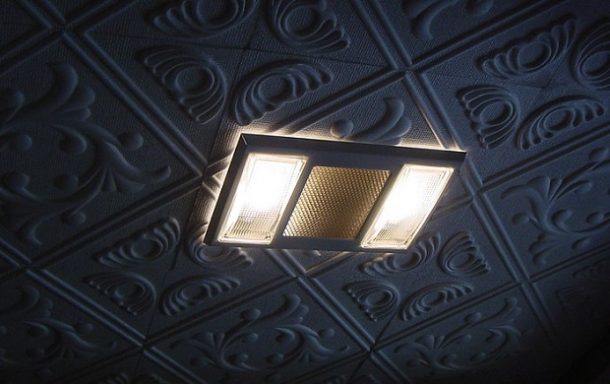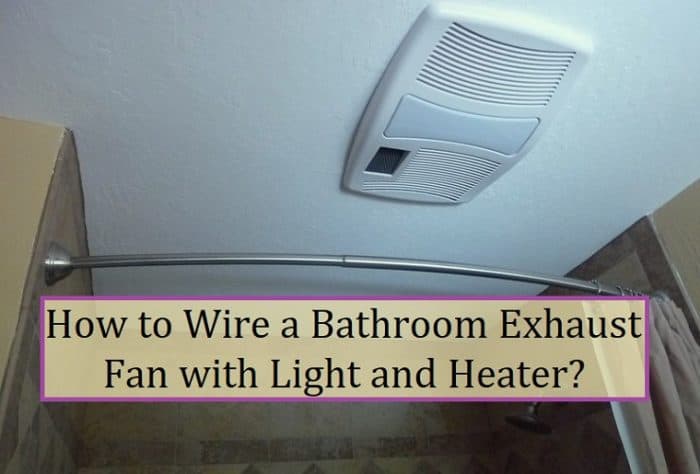Often straightforward things look very complicated once you try to attempt them. On the contrary, some complex tasks turn out to be very easy once we start doing them.
The condition, of course, is the guidelines should be simple, and the one following them should use logic. One such practical example is dealing with the wiring of your bathroom exhaust fan.
Though it sounds scary, it is not! So if you are wondering how to wire a bathroom exhaust fan with a heater and light? The following article will serve your purpose. Before proceeding, we will explain some basics.

How will this be wiring benefit you?
You previously had three separate switches to your washroom electric supplies like an exhaust fan, light, and heater.
But it has been a hassle dealing with them. So, now you have decided to overhaul the wiring of your electric supplies in the bathroom.
Beware!
We will explain a few things that you should be careful about:
Whenever you start doing the wiring, do not forget to switch off the main breakers. Still to be on the safer side, switch off all the buttons and check with the tester for the current. Sometimes due to faulty wiring, an electric current may be flowing in, so always use a checker before proceeding.
Secondly, be vigilant in getting all the supplies in hand. Your toolset should be ready. Most importantly, a tester, wire cutters, wire plugs, a new switchboard with three switches separately controlled, pliers, screwdrivers, and desired cables. Let us see which wires you need?
Cables and wires need a bit of your attention:
Cable selection is very significant. Usually, lighting cables have three core wires (in insulation sheath) and the fourth ground wire, i.e., the earth one is without a sheath.
They all are further packed together in a sheath of PVC insulation. These cables are unique in providing power supply to the two-way light switches.
So, for the above purpose, you need /4 cable. Their installation usually requires a power supply of 15-20 A. But the total power supply depends upon the power necessary for the electric heater.
Colour coding:
Let us have an overview of the wires’ color coding in the cable. This understanding will help us connect the required wire to the concerning supply.
So, all white wires are neutral wires, the unsheathed one is earth, and the third one is the hot one. You will cover these live wires in blue, black and red. The reason for this will be explained in detail further below.
You are now licensed to start wiring as a beginner!
Switch off the main supplies and use a good torchlight. Make sure that you switch off all the switches. Now go to your exhaust fan wiring. Once you open the supply box, you will find four wires, as described above.
Exploring the switch box:
As you open the main panel, you will find the white, ground, and hot wires.
The white wires are all neutral. You will take the neutral wire from the main supply and the cables and join them together. Now secure their ends in a wire nut. Rotate it clockwise. Usually, they are not connected to the switchboards. But, nowadays, some smart switches are equipped with the use of neutral wires.
Read the guidance for the cleaning of exhaust fan
Now let’s deal with all the ground wires.
They are also connected in a wire nut. Now we move to the black wires, also called the hot wires. Your switchboard has three screws at the back. Just loosen up these screws with a screwdriver.
Now each screw will get a hot wire from the panel and one from the devices’ cable supply. They are secured with wire nuts too.
Finally, you will end up with having two black hot wires in two switches and a third one having one red. Tighten back the screws.
Thus, at the end of this step.
Your neutrals and ground from both the main panel and three cables should be wired nut. Of course, separately! And now, each switch screw has colored hot wires from the board and a device cable.
To avoid any confusion and for dealing with troubleshooting, it is suggested that you assign separate colors to them.
Tape the hot wire for light with blue tape; black is for the exhaust fan, and red denotes heat so it will be for the heater. Let us now move on to the next step!
The devices turn now!
Ground wires are connected to ground wires in the cable. Now open the lights’ supply box. At the other end of the cable, you will cover the live or brown wire with blue tape. Now screw it.
Now take the black hot wire of the exhaust fan. It is connected at one end to the fan, and the one is restored in the switch box. Don’t mingle up the three cables with each other.
The third red hot one will finally be connected to the red-hot supply to the heater. Thus, all the wiring is done.Now you have wired the bathroom ventilation unit, light, and heater with separate controls.
Securing the devices in their respective places:
Approaching towards the end of your task, place the devices in their respective boxes. Fix the switchboard also. Cover it with the protective frame. Once everything is at its place, safe and secure. Now comes the final step!
Here you go!
Yes, after all the hard work and dealing with the wires’ puzzle, you are all set to go. Switch on the main power supply. Now, check all the electrical devices separately. Hopefully, following the instructions, you will end in an unbeaten test run of all of them.
Last words:
Wiring is not as complicated as you see the different tentacles coming out of the cable. It is merely a science of wire connections. The result, however, is nerve testing, as you witness it in so many movies’ “bomb defusal” scene.
In reality, it wouldn’t have been so scary if the hero had read a few basics of wires! To connect your wires properly, and enjoy reading newspaper in the bathroom with the exhaust fan on in the soothing warmth of the heater!

